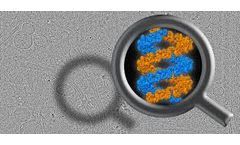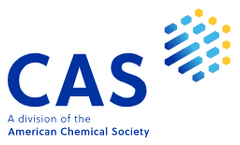Parkinsons Disease Articles & Analysis: Older
32 articles found
Generates a valuable model for identifying new targets for neuro-regeneration as opposed to treatments limiting to symptomatic relief or delaying disease progression. Allows for future adaptation of technology for regenerative medicine and cell therapy in humans for the treatment of Parkinson's disease, Lou-Gehrig disease (ALS), ...
They contain a range of biomolecules, such as lipids, proteins, and nucleic acids. Cancer, Alzheimer's disease, and Parkinson's disease are just a few of the illnesses for which EVs can be used as biomarkers. ...
These findings hold potential implications for Parkinson’s disease (PD), a neurodegenerative disorder that involves the PPN. ...
Accumulation of proteins usually leads to qualitative change in organism, thus causing tumorigenesis or disease. Therefore, quantification of proteins is significant for mechanism investigation. ...
People living with frontotemporal dementia, or FTD, are commonly misdiagnosed with psychiatric disorders or Alzheimer’s disease and other causes of dementia, such as Parkinson’s disease and vascular dementia. While frontotemporal dementia and Alzheimer’s disease can both cause dementia, there are distinct ...
These factors limit progress in developing new treatments for conditions like Alzheimer’s Disease, Parkinson’s Disease, Cancers, Autoimmune Disorders, and many others. ...
It’s reported that persistent activation of NF-κB can lead to chronic inflammation, such as rheumatoid arthritis, Parkinson's disease, and inflammatory bowel disease. However, NF-κB activation requires interactions with NF-κB essential modulators and kinase complexes. ...
Possible causes include musculoskeletal problems (such as leg weakness), neuromuscular problems (e.g., Parkinson’s disease) or sensory impairments (e.g., somatosensory deficit). ...
Precise Dosing for Maximum Outcomes There are many factors that impact the effectiveness of a treatment, such as when a patient takes their medication (before or after eating, the time of day, etc.) or how their body responds. Consider Parkinson’s Disease, for example. The timing of when someone takes their medication can fundamentally impact the ...
ByAiCure
The discovery could lead to better new treatments for neurological disorders such as anxiety, autism spectrum disorder, schizophrenia and Parkinson's disease. In determining the structure of this transporter, one of the smallest proteins ever made, researchers have opened up new avenues to improve drugs for a variety of debilitating diseases, ...
Alzheimer’s and Parkinson’s disease are both neurological diseases that cause progressive damage to the brain, resulting in a decline in neurocognitive function. While Parkinson’s disease is known for affecting movement and function and Alzheimer’s disease is known for ...
Parkinson’s disease is a progressive neurodegenerative disease that is most commonly known for affecting movement. ...
The relationship between lncRNAs and diseases is well established, especially in chronic disorders. However, cancer is one of the most intensively studied diseases associated with lncRNAs. ...
Low movement velocity values are indicative of neuromuscular deficiencies caused by stroke, Parkinson’s disease, among other age-related disorders. Low reaction time values are indicative of cognitive deficits, fear of falling, and anxiety, often due to aging. ...
Australian researchers have recently solved a multi-year mystery about Parkinson's disease. They solved the structure of a key protein that is expected to rapidly treat this incurable disease. ...
Importance of posturography Several conditions like stroke, Parkinson’s disease, multiple sclerosis, cerebral palsy, vestibular dysfunctions, knee and foot lesions, traumatic brain injury, among many others will affect balance. ...
Several conditions like stroke, Parkinson’s disease, multiple sclerosis, vestibular dysfunctions, knee and foot lesions, among many others will affect balance. ...
Today, there are only a few therapies approved to treat COVID-19, but while novel therapies can take decades and billions of dollars to develop, are there opportunities to repurpose existing drugs for new therapies? Our latest whitepaper showcases how CAS Knowledge Graphs reveal new connections and insights that identify drugs to potentially repurpose. Drug repurposing is critical for faster ...
“After years of research, we believe that A-I can provide the path to relief for millions of people suffering from Neurodegeneration such as Alzheimer’s, Parkinson’s and other neuro-brain disorders and mental diseases.” At the Dubai conference Dr. Newton will be showcasing ni20, a dynamic spinout company from his Oxford team’s ...
Some of the most commonly contributed factors include: Nerve Damage When signals are sent to the brain and the bladder, the body tries to empty the bladder at the wrong time. There are several diseases, as well as types of trauma, that can cause this to happen. Some of the most commonly found causes of nerve damage that cause overactive bladder include: Back surgery ...














